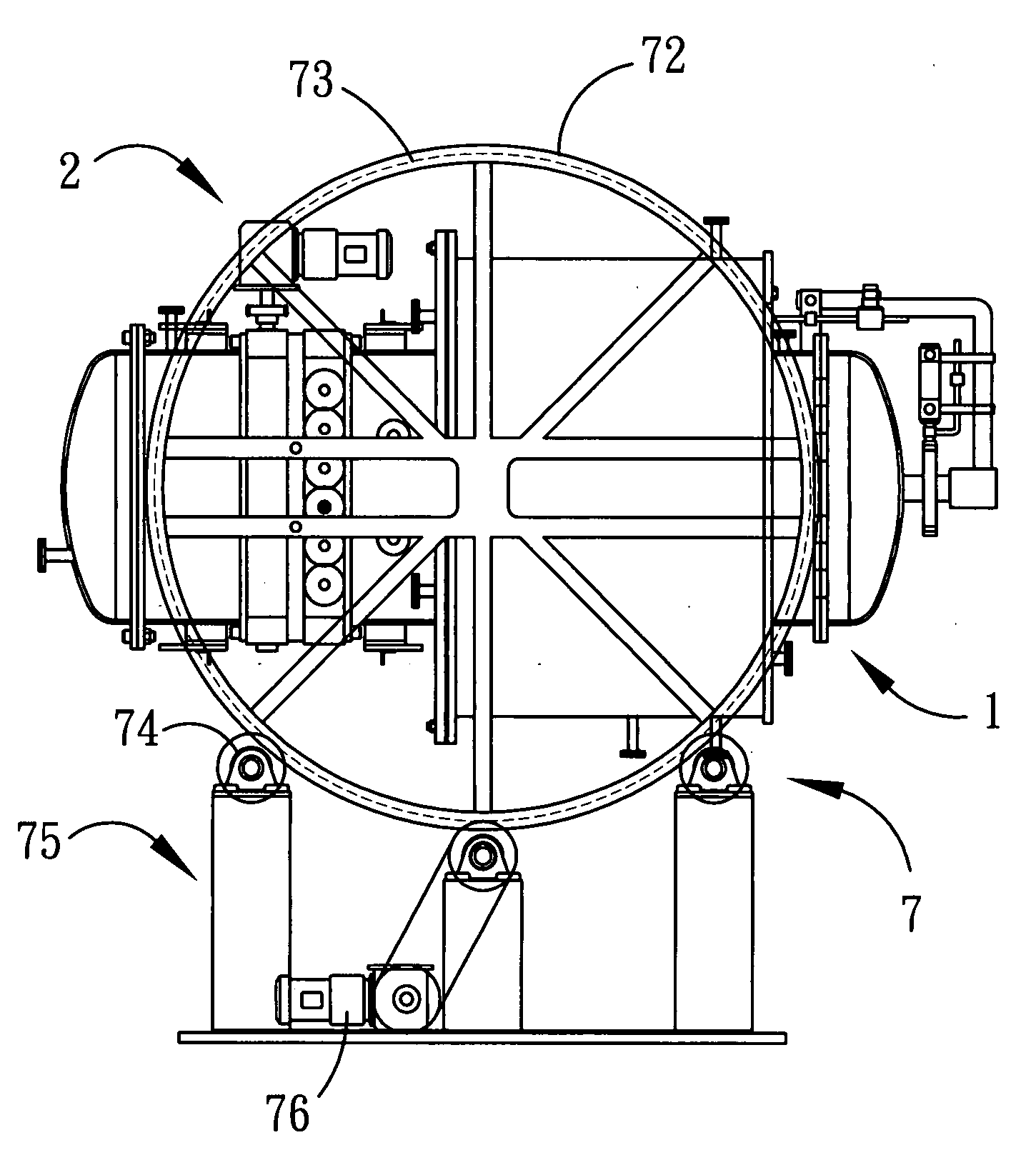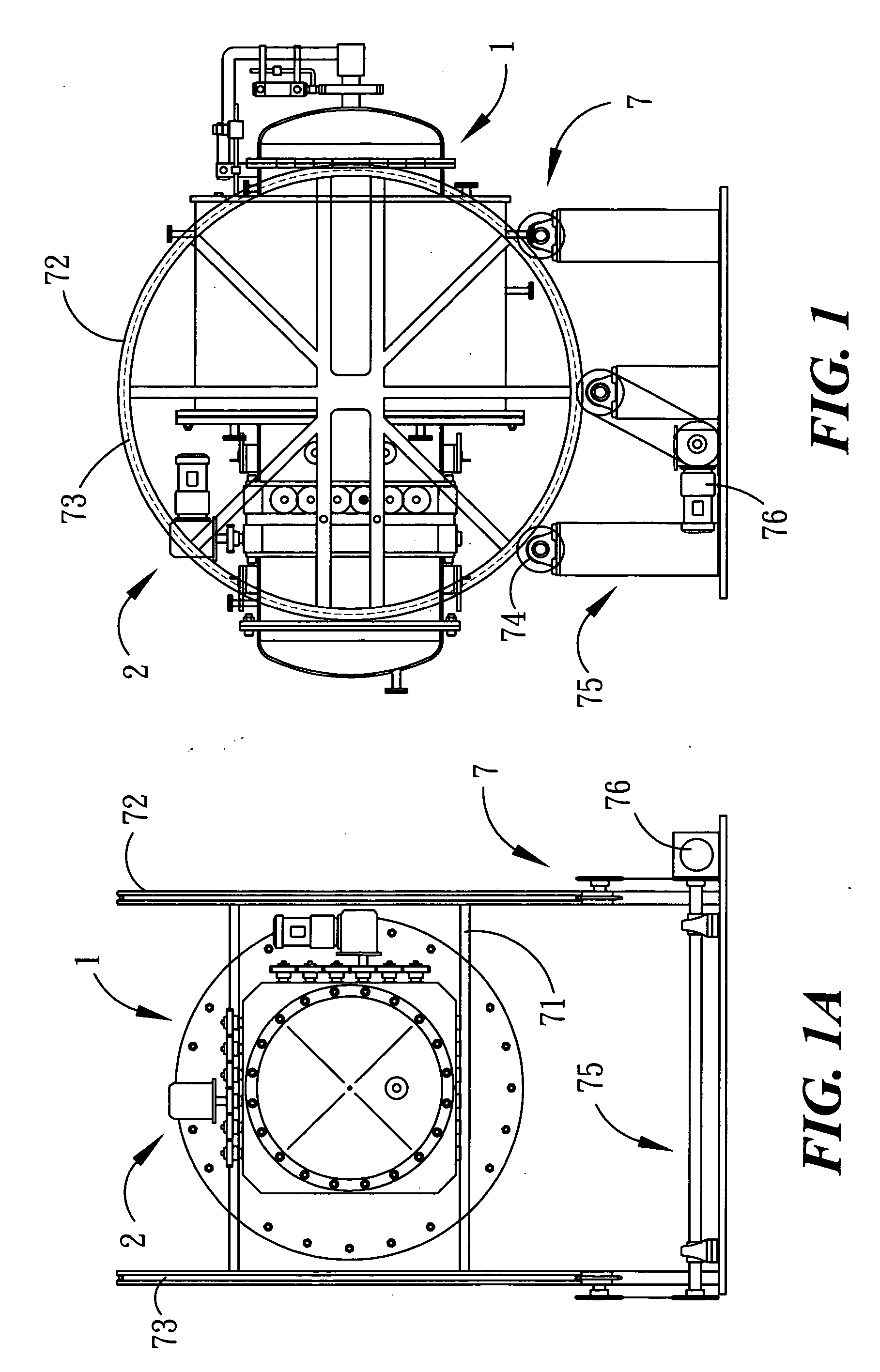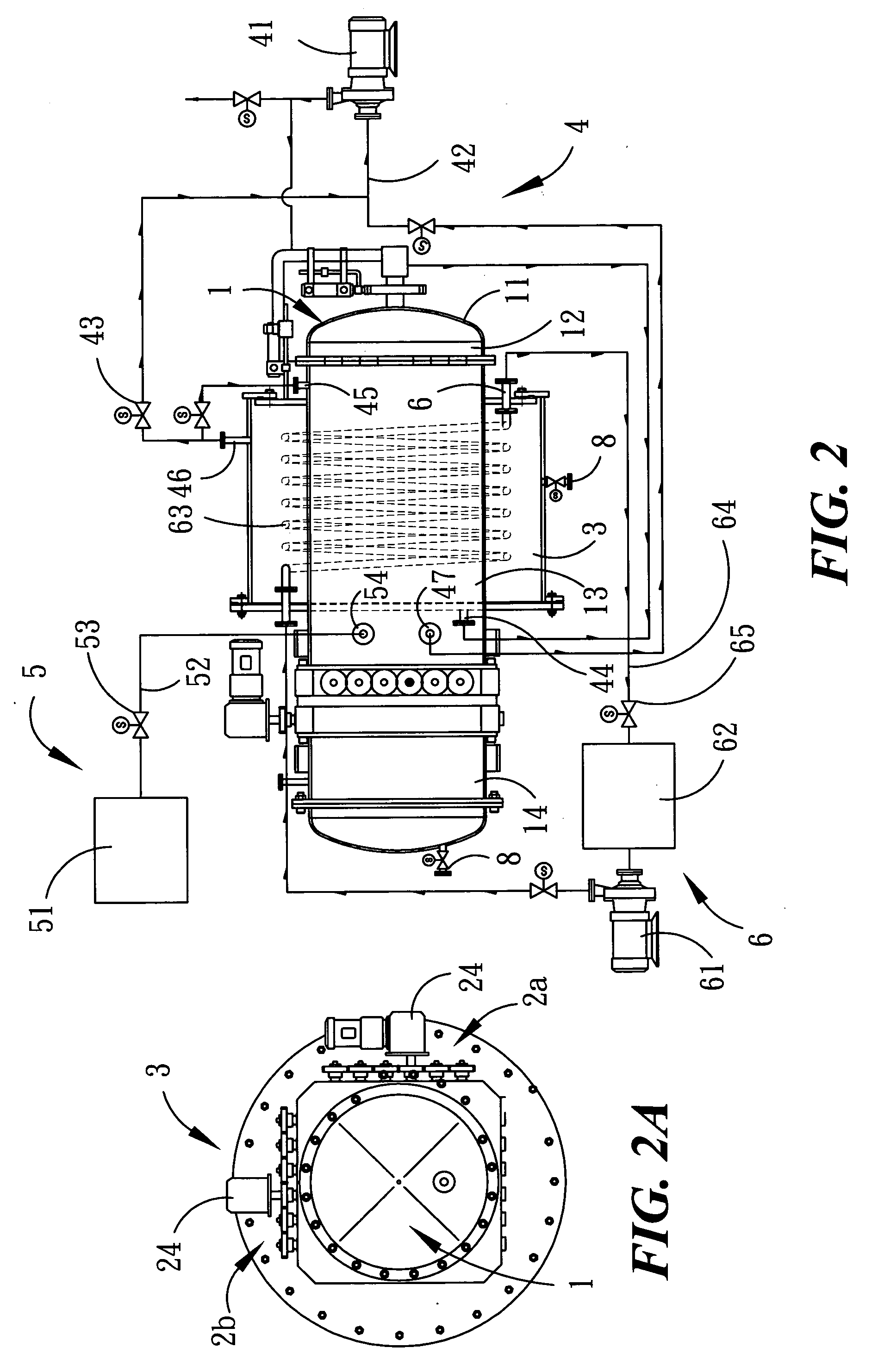Reciprocating autoclave with internal cutters (RAIC) and method for treatment of medical waste
- Summary
- Abstract
- Description
- Claims
- Application Information
AI Technical Summary
Benefits of technology
Problems solved by technology
Method used
Image
Examples
Embodiment Construction
[0042] As shown in FIG. 1 to 2a, this invention facilitates a novel internal multiple-shaft crushing apparatus for the treatment of medical wastes. The major parts include: one set of waste-treating vessel 1, two sets of cutter devices 2, one set of gas buffering and cooling vessel 3, one set of vacuum system 4, one set of steam supply system 5, one set of heat exchange system 6, and one set of driving system for the vessel 7. The use of this apparatus also involves a novel method.
[0043] This invention includes a waste-treating vessel 1 for the containing and treatment of medical wastes (not shown in the diagram). The wall of the waste-treating vessel 1 is manufactured with a vacuum layer for better insulation. Located at the front end of the vessel is a feed inlet and outlet 12 for waste feeding and removal, and a closure member 11 is provided covering the feed inlet and outlet 12, by which the waste-treating vessel 1 can be closely sealed during the treatment of wastes. Inside th...
PUM
 Login to View More
Login to View More Abstract
Description
Claims
Application Information
 Login to View More
Login to View More - R&D
- Intellectual Property
- Life Sciences
- Materials
- Tech Scout
- Unparalleled Data Quality
- Higher Quality Content
- 60% Fewer Hallucinations
Browse by: Latest US Patents, China's latest patents, Technical Efficacy Thesaurus, Application Domain, Technology Topic, Popular Technical Reports.
© 2025 PatSnap. All rights reserved.Legal|Privacy policy|Modern Slavery Act Transparency Statement|Sitemap|About US| Contact US: help@patsnap.com



